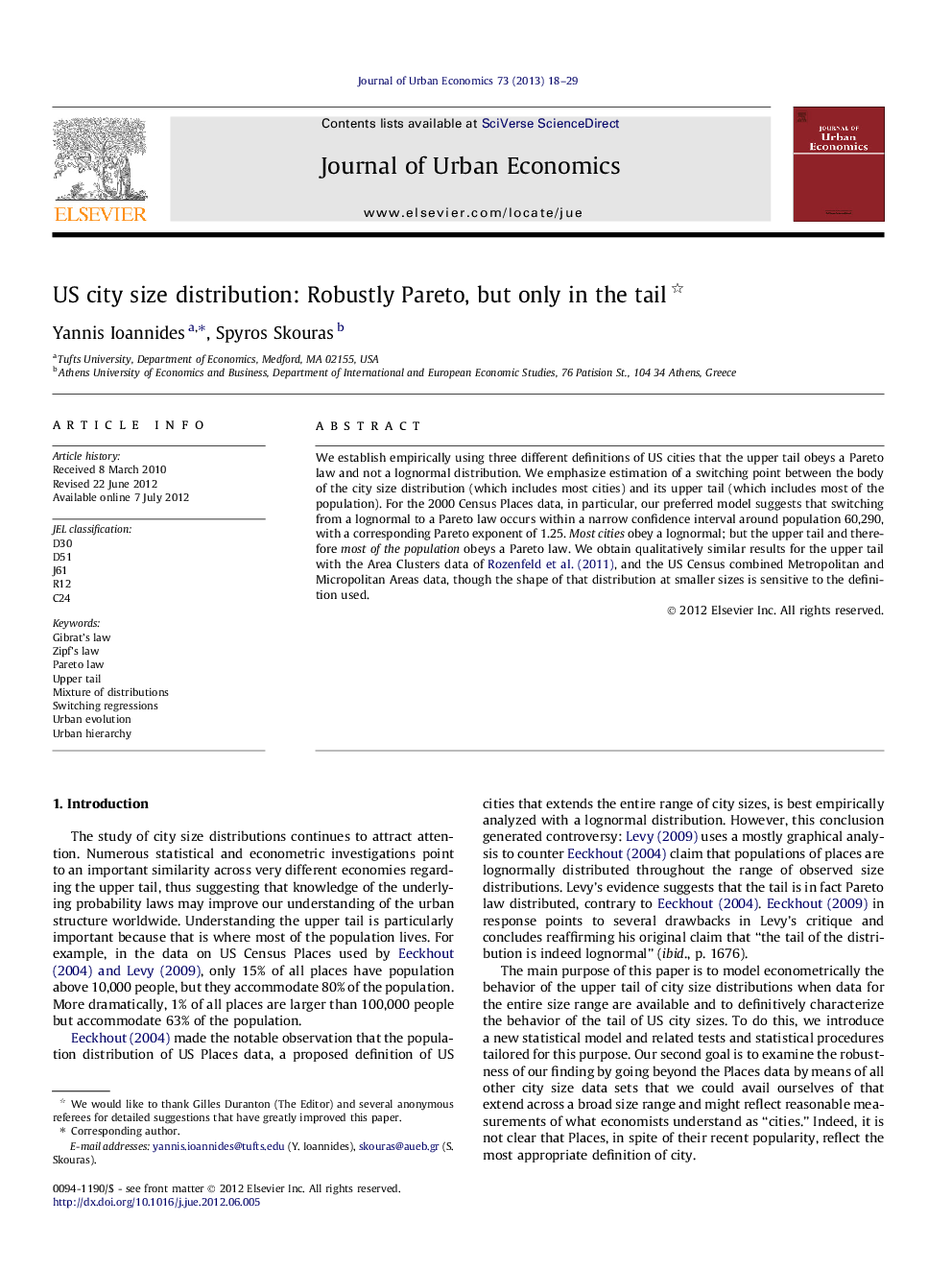| Article ID | Journal | Published Year | Pages | File Type |
|---|---|---|---|---|
| 970826 | Journal of Urban Economics | 2013 | 12 Pages |
We establish empirically using three different definitions of US cities that the upper tail obeys a Pareto law and not a lognormal distribution. We emphasize estimation of a switching point between the body of the city size distribution (which includes most cities) and its upper tail (which includes most of the population). For the 2000 Census Places data, in particular, our preferred model suggests that switching from a lognormal to a Pareto law occurs within a narrow confidence interval around population 60,290, with a corresponding Pareto exponent of 1.25. Most cities obey a lognormal; but the upper tail and therefore most of the population obeys a Pareto law. We obtain qualitatively similar results for the upper tail with the Area Clusters data of Rozenfeld et al. (2011), and the US Census combined Metropolitan and Micropolitan Areas data, though the shape of that distribution at smaller sizes is sensitive to the definition used.
